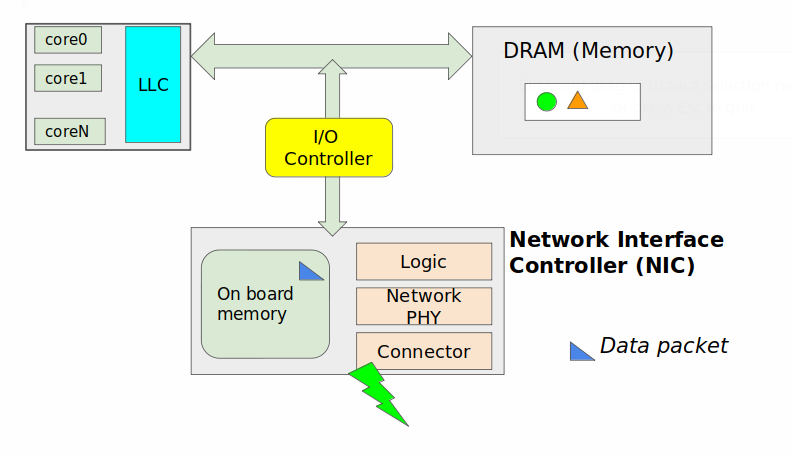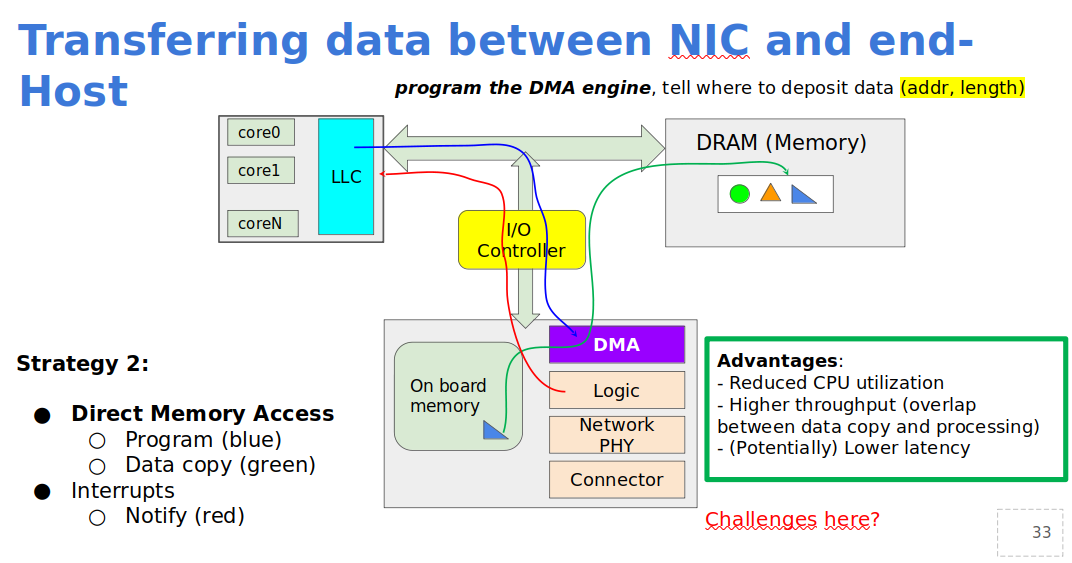02 - Packet’s load tolerance
Keep up packets
- bandwidth: measures capacity (a bigger pipe would mean higher bandwidth)
- latency: measures data speed (how quickly does the water in the pipe reaches its destination)
- throughput: measures data transmitted and received during a specific time (the water running through the time)
Example: you can have a 100Gb/s NIC (bandwidth), but can transmit only at 40Gb/s (throughput) because of overheads
Recap: model
| Level | OSI | TCP/IP | Examples |
|---|---|---|---|
| 1 | physical | same | ethernet |
| 2 | data link | same | ethernet |
| 3 | network | same | ip |
| 4 | transport | same | tcp/udp |
| 5 | session | - | |
| 6 | presentation | - | |
| 7 | application | same |
Socket
- first in 1983
- level of abstraction very useful because nowadays are still used
- unix file with basic function that can send and receive “data”
- it is between transport and application layer
The other things are managed by the OS!
Questions
- transfer data between network controller and the end host


- Notify the end host about network packet reception
-
we can use interrupts
- letteralmente il SO che dice “ao, *ferma tutto* … che te serve? … Ok, mo vedi d’annattenne” e si rimette in ascolto
-
if CPU gets an interrupt and keeps to be interrupted, this leads to a livelock: a state where the system is perfectly able to work but it cannot do any work
-
deadlock: process waits for some resource to do the work
-
Interrupt would occur each 6ns. It is not sustainable for the cpu to work in this way, so, some possible alternatives:
- interrupt coalescing (mix): generate an interrupt every n packets
- polling: disable interrupts all together, use CPU polling to check for new arrivals
- hybrid: a mix of these two
- interrupts → polling → interrupts
- there is a threshold when the rate exceed then switch to polling, then to interrupts
Advantages
- lower cpu utilization
- higher throughput
Disadvantages
- higher latency
- build a packet with multiple protocols and headers